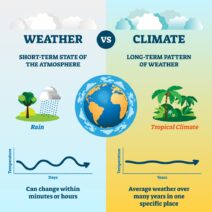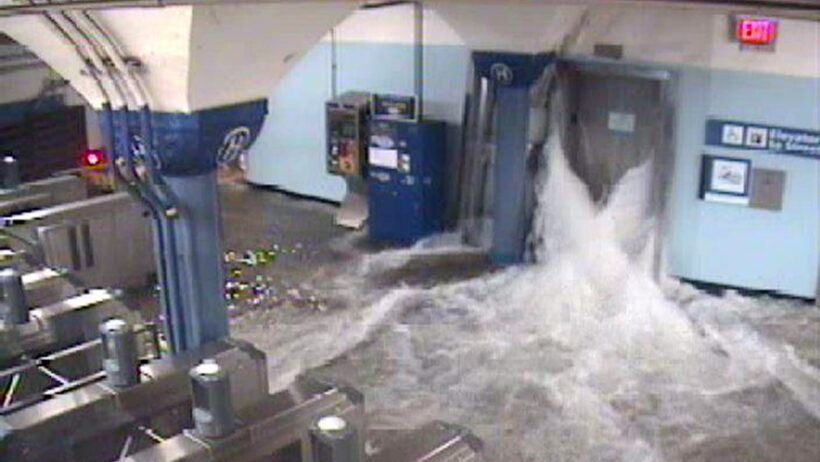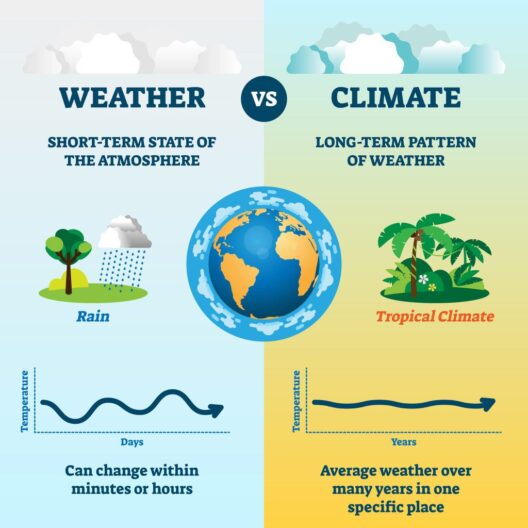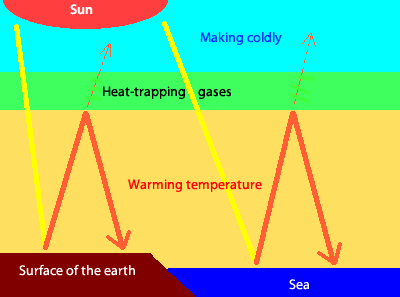Global warming has emerged as one of the foremost challenges facing humanity in the 21st century. The increase in average global temperatures has profound implications for climate patterns, leading to more frequent and severe weather phenomena. Understanding the correlation between global warming and extreme weather events is vital for both scientific inquiry and public policy. This discourse examines various manifestations of extreme weather, underpinned by climate science, presenting a comprehensive overview of the ramifications of rising temperatures.
The term “extreme weather events” encompasses a plethora of phenomena, including hurricanes, droughts, floods, heatwaves, and wildfires, among others. Each of these events is influenced by the overarching climate system, which has been destabilized due to anthropogenic emissions of greenhouse gases. These emissions enhance the greenhouse effect, trapping heat in the Earth’s atmosphere and resulting in a cascade of climatic repercussions.
Hurricanes are one of the most dramatic illustrations of how global warming can exacerbate extreme weather. Warmer ocean temperatures serve as an incubator for these storms, providing the necessary energy to initiate and sustain their ferocity. Research indicates that with every degree Celsius of warming, hurricane intensity can increase significantly. More moisture-laden air fuels these systems, often leading to higher precipitation rates and catastrophic flooding. The devastation wrought by recent hurricanes, such as those striking coastal communities, underscores the urgent need to address the underlying causes of climate change.
Another alarming consequence of rising global temperatures is the increase in drought frequency and severity. Higher evaporation rates from soil and water bodies stress agricultural systems, leading to crop failures and threatening food security. As precipitation patterns become increasingly erratic, regions that once relied on predictable weather cycles find themselves grappling with prolonged dry spells interspersed with intense rainfall events, which can exacerbate soil erosion and degrade agricultural lands.
Flooding presents a dual challenge, as both heavy rainfall and rapid snowmelt can overwhelm existing drainage systems and riverbanks. The intensity and frequency of heavy rainfall events have increased, leading to flash floods that result in significant socio-economic damages. Urban areas, with their vast impermeable surfaces, are particularly vulnerable. The interplay between infrastructure inadequacies and climate change highlights the urgent need for adaptive strategies that can manage stormwater and mitigate flood risks in the face of more frequent extreme weather occurrences.
Heatwaves also illustrate another facet of global warming’s impact on weather. As average temperatures rise, the likelihood and intensity of heatwaves increase. Prolonged exposure to extreme heat can have dire health consequences, particularly for vulnerable populations. The strain on energy resources due to increased demand for cooling exacerbates the problem, highlighting the interconnected nature of climate issues and infrastructure resilience. The urban heat island effect, wherein cities experience higher temperatures than rural areas, compounds this challenge, creating critical situations that necessitate immediate action.
Wildfires have become another visible testament to the consequences of climate change. The convergence of higher temperatures, prolonged drought conditions, and erratic precipitation promotes the ignition and spread of fires. Regions that were once resilient to wildfires now find themselves facing unprecedented risks. The interconnectivity of ecosystems means that entire habitats can be obliterated, disrupting biodiversity and releasing vast amounts of carbon stored in trees back into the atmosphere, further exacerbating the climate crisis.
Correlations between global warming and extreme weather events have been substantiated by extensive research. Scientists utilize climate models to project future scenarios under varying levels of greenhouse gas emissions. These projections indicate that if current trends continue, the frequency and intensity of extreme weather events will only escalate, posing increased risks to human health, infrastructure, and natural ecosystems.
Furthermore, the socioeconomic implications of these extreme events are profound. Vulnerable communities, often lacking the resources to withstand climatic shocks, find themselves disproportionately affected. The intersection of poverty and climate change highlights the need for governments and policymakers to integrate climate resilience into development plans. Investing in sustainable infrastructure, enhancing emergency response systems, and prioritizing education and awareness are vital steps in mitigating the impact of extreme weather.
International cooperation is essential in addressing global warming and its subsequent effects on weather patterns. Climate change knows no borders; therefore, collective action is imperative. Agreements like the Paris Accord signify a global commitment to limit temperature rises and reduce greenhouse gas emissions. However, the political will to implement and enhance these agreements remains a contentious issue that must be addressed proactively.
In conclusion, global warming has unequivocally contributed to the increase in extreme weather events. With hurricanes growing more devastating, droughts more frequent, and wildfires more pervasive, the evidence is compelling. As the scientific community continues to unravel the intricate relationships between climate change and weather patterns, the imperative for immediate action grows ever more critical. Only through concerted efforts—embracing adaptation, resilience, and mitigation—can humanity hope to navigate the challenges posed by a changing climate and safeguard the planet for future generations.







